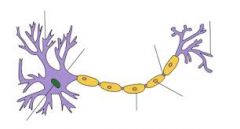![]()
![]()
![]()
Use LEFT and RIGHT arrow keys to navigate between flashcards;
Use UP and DOWN arrow keys to flip the card;
H to show hint;
A reads text to speech;
20 Cards in this Set
- Front
- Back
|
Endocrine System
|
creates hormones that regulate bodily
activities |
|
|
Glands
|
an organ/structure that produces and
secretes a hormone |
|
|
Hormones
|
chemical messengers produced by glands
that are released directly into the bloodstream. They regulate metabolism, growth and development, reproduction, stress response and cell permeability |
|
|
Thyroid
|
produces hormones that regulate metabolism,
absorption of calcium by bones, & nervous system development |
|
|
Pituitary
|
produces hormones that assist in growth &
reproduction |
|
|
Hypothalamus
|
part of the brain that regulates the amount of
water in the blood & body temperature |
|
|
Pineal
|
gland in the brain that produces the
hormone responsible for sleepiness |
|
|
Adrenal
|
produces several hormones responsible for
releasing hormones in response to stress |
|
|
Pancreas
|
produces several hormones that regulate
glucose levels in the blood |
|
|
Thymus
|
Produces white blood cells during childhood
|
|
|
What are the 3 main functions of the Nervous System?
|
• Receives Stimuli (receives the information)
• Interprets information • Causes a response |
|
|
What are the 2 parts of the Nervous System?
|
• Central Nervous System (CNS)
• Peripheral Nervous System (PNS) |
|
|
Where is the Central Nervous System (CNS) located?
|
brain and spinal cord
|
|
|
Where is the Peripheral Nervous System (PNS) located?
|
in nerves that connect the CNS to other body parts
|
|
|
What does the Central Nervous System do?
|
processes incoming sensory information
|
|
|
What does the Peripheral Nervous System do?
|
its the communication lines of the body
|
|
|
Somatic system
|
Controls voluntary movement.
|
|
|
Automatic system
|
Controls involuntary movement
|
|
|
What are the 4 parts of a Reflex Arc?
|
· Stimulus – a change in the environment.
· Receptor – the sense organ that detects the change. · Effector – the organ that responds (usually a muscle). · Response – the reaction that takes place. |
|

What are the 3 parts of a Neuron?
|
Axon- carries messages away
from cell body Dendrites- receives messages from other neurons Axon terminal- forms a connection with another neuron to pass info to it |

